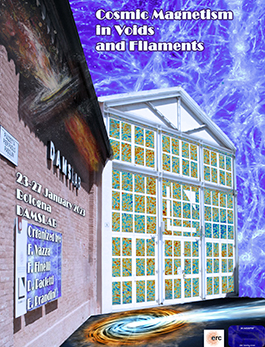Speaker
Mr
Frederick Groth
(University-Observatory Munich)
Description
Subsonic turbulence is a difficult problem for many numerical methods to handle. We use our new implementation of Meshless Finite Mass (MFM) in OpenGadget3 to calculate decaying, subsonic turbulence. Comparing the performance to other methods, including Smoothed Particle Hydrodynamics (SPH) in OpenGadget3, and a moving and a stationary mesh using the publicly available AREPO code, we show that MFM performs best capturing the turbulent power spectrum and works down to very small Mach numbers. Overall, this is very promising for the accurate evolution of turbulence in the intra-cluster medium in upcoming simulations of galaxy clusters.

